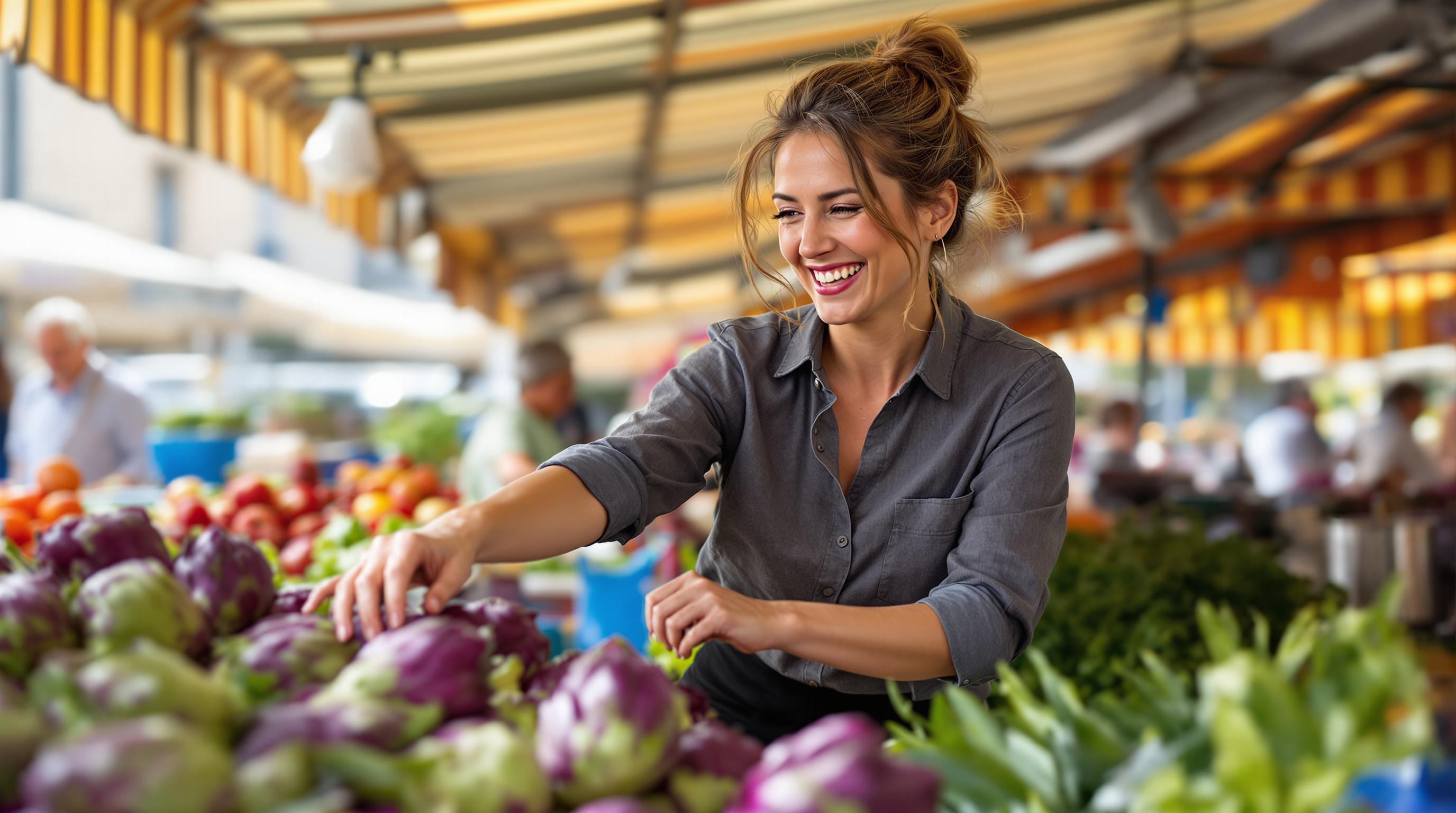The evolution of French haute cuisine
French haute cuisine has undergone a remarkable transformation over the decades, evolving from traditional cooking methods to the pinnacle of culinary excellence that we know today. The Michelin Guide has played a pivotal role in shaping this evolution since its inception, establishing the prestigious three-star rating system that has become the ultimate recognition in gastronomy.
The foundation of modern French haute cuisine can be traced through legendary establishments like La Pyramide by Fernand Point, which held three Michelin stars from 1933 to 1955. This era marked the beginning of a new approach to fine dining, emphasizing precision, technique, and the quality of ingredients.
A significant milestone came with the emergence of Paul Bocuse, whose L'Auberge du Pont de Collonges maintained three Michelin stars from 1965 to 2019. Bocuse revolutionized French cuisine by introducing lighter preparations while maintaining the essence of traditional flavors. His influence continues to shape contemporary gastronomy, as evidenced by the practices of current three-star establishments.
The evolution continued with pioneers like Alain Chapel (1973-1990) and Roger Vergé (1974-1993), who brought their unique interpretations to haute cuisine. Their innovative approaches paved the way for a new generation of chefs who would later earn the coveted three stars.
Today's French haute cuisine represents a perfect balance between tradition and innovation. Modern three-star chefs like Anne-Sophie Pic demonstrate this evolution by combining classical French techniques with contemporary creativity. At La Maison Pic, she honors her family's culinary legacy while pushing boundaries with innovative flavor combinations and presentations.
The transformation is also evident in the increasing focus on local ingredients and sustainability. For instance, Alain Passard at L'Arpège made a revolutionary decision in the 2000s to reduce meat dishes and emphasize vegetables, demonstrating how haute cuisine can adapt to changing culinary perspectives while maintaining its excellence.
This culinary evolution has also influenced restaurant aesthetics and service. Modern three-star establishments like La Table du Castellet, where Chef Fabien Ferré recently earned three stars, showcase contemporary dining rooms that contrast with traditional palatial settings, reflecting the ongoing modernization of French haute cuisine while preserving its fundamental principles of excellence.

Portrait of contemporary 3-star chefs
Alain Ducasse stands as a true legend of French gastronomy. His flagship restaurant at Plaza Athénée exemplifies his culinary philosophy focused on respecting ingredients and authentic flavors. His masterful preparation of roasted lobster with seasonal vegetables demonstrates his exceptional expertise and attention to detail.
Anne-Sophie Pic, the fourth generation of the Pic family, represents excellence at La Maison Pic in Valence. After studying hotel management, she became the only female chef in France to hold three Michelin stars in 2007. Her creative cuisine skillfully blends French culinary traditions with contemporary elements, showcasing local products from the Drôme region.
Yannick Alléno has revolutionized modern French cuisine since taking over Pavillon Ledoyen in 2014. Beginning his career at age 15, he quickly gained international recognition and earned his third Michelin star in 2015. His signature dish, the "Poularde de Bresse demi-deuil" - a Bresse chicken slowly cooked with black truffles - exemplifies his innovative approach to traditional French cuisine.
Each of these chefs brings a unique perspective to haute cuisine:
- Ducasse emphasizes pure flavors and exceptional ingredients
- Pic focuses on creative flavor combinations and regional inspiration
- Alléno champions innovative techniques while respecting classical foundations
Their distinctive approaches have not only earned them the coveted three Michelin stars but have also helped shape contemporary French gastronomy, inspiring a new generation of culinary artists.

The path to culinary excellence
The journey to earning three Michelin stars represents the pinnacle of culinary achievement, as exemplified by Fabien Ferré's extraordinary accomplishment at La Table du Castellet. At just 35 years old, he became the youngest chef to receive this prestigious recognition, and remarkably, the first to achieve it without prior Michelin stars.
The path demands unwavering dedication and extensive training. Ferré's journey began in Burgundy, where he honed his skills through apprenticeships at renowned establishments like Les Terrasses and Maison Troisgros. His decade-long collaboration with Chef Christophe Bacquié at Hotel du Castellet culminated in winning the Trophée de l'Espoir and reaching the finals of the Meilleur Ouvrier de France competition.
Maintaining three Michelin stars requires meeting stringent criteria:
- Exceptional product quality and selection
- Mastery of cooking techniques and flavor harmony
- Chef's distinctive personality expressed through cuisine
- Consistency in both dishes and service over time
The pressure at this level is immense, demanding constant innovation while maintaining excellence. Ferré's success stems from his authentic approach to Mediterranean cuisine, close collaboration with local producers, and his team's shared passion for culinary perfection.
Innovation and tradition in modern gastronomy
Modern French 3-star chefs masterfully blend traditional techniques with innovative approaches. Glenn Viel exemplifies this balance at L'Oustau de Baumanière, where he has developed unique "seasoning stones" made from concentrated ingredients like celery, mushrooms, and langoustines.
The focus on local sourcing and sustainability is paramount. Viel collaborates with local artisans, from creating custom ceramics with Cécile Cayrol to working with glassblower Alban Gaillard. He even makes his own butter using milk from nearby farms and has expanded the restaurant's vegetable garden.
This commitment to sustainable gastronomy earned Viel the "Sustainable Gastronomy" distinction from the Michelin Guide, recognizing his innovative practices:
- Installing tomato drying racks on restaurant terraces
- Developing unique bread pairings for each dish
- Creating partnerships with local craftsmen
- Maintaining close relationships with regional producers
The luxury hotel restaurant phenomenon
The marriage between luxury hotels and Michelin-starred restaurants has become a defining feature of French haute cuisine. These establishments understand that exceptional gastronomy paired with luxurious accommodation creates an unparalleled guest experience.
Leading the way, iconic Parisian palace Le Meurice exemplifies this synergy with its two Michelin-starred restaurant under Alain Ducasse's direction. The restaurant's refined cuisine perfectly complements the hotel's historical elegance, offering guests a complete immersion in French luxury.
This evolution has transformed how luxury hotels approach dining. No longer just an amenity, gastronomic excellence has become central to the luxury hotel experience. The criteria for these establishments are particularly demanding, including:
- Selection of exceptional products
- Mastery of cooking techniques and flavor harmony
- Chef's personality and creativity
- Consistency in both dishes and service over time
The Plaza Athénée in Paris long stood as a prime example, with its three-starred restaurant under Alain Ducasse until 2021. This prestigious collaboration demonstrated how culinary excellence can enhance a hotel's international reputation while attracting discerning guests seeking unique dining experiences.
Beyond Paris, establishments like Mandarin Oriental Barcelona with its two-starred Moments restaurant, and The Dorchester in London with its three Michelin stars, showcase how this French model has influenced luxury hospitality worldwide. These venues create immersive experiences where the refinement of the rooms matches the perfection on the plate.
The success of these partnerships relies heavily on passionate chefs who serve as true maestros of gastronomy. Their culinary artistry elevates these hotels into coveted destinations for epicureans worldwide, while maintaining the highest standards of French gastronomic tradition.
The future of French haute cuisine
The next generation of French haute cuisine is embodied by rising stars like Fabien Ferré, who at just 35 years old became the youngest chef to receive three Michelin stars in 2024. His meteoric rise at La Table du Castellet demonstrates how young chefs are revolutionizing French gastronomy while honoring its foundations.
This new wave of chefs is particularly focused on sustainability and local sourcing. Ferré, for instance, has developed strong relationships with local producers and fishermen in Provence, selecting his products daily from the Sanary-sur-Mer market. This approach reflects a broader trend among emerging chefs who prioritize environmental responsibility without compromising on excellence.
Modern French haute cuisine is also embracing innovation in presentation and technique. Glenn Viel, another forward-thinking chef, has introduced unique seasoning methods using concentrated ingredients he calls "seasoning stones," while also establishing an innovative bread-pairing program for each dish. These creative approaches show how tradition and innovation can coexist harmoniously.
The evolution is also visible in menu concepts, with chefs like Ferré offering specialized experiences such as "Expression Végétale" and "Expression Marine" menus. This represents a departure from classical French cuisine's meat-centric approach, reflecting changing dining preferences while maintaining the sophistication expected of three-star establishments.
International influences are increasingly apparent, yet distinctly French. Young chefs are incorporating global techniques and ingredients while maintaining their connection to French culinary heritage. This is evident in their commitment to fundamental elements like sauce-making, which Ferré describes as "the DNA of gastronomy," while exploring new flavor combinations and presentations.
